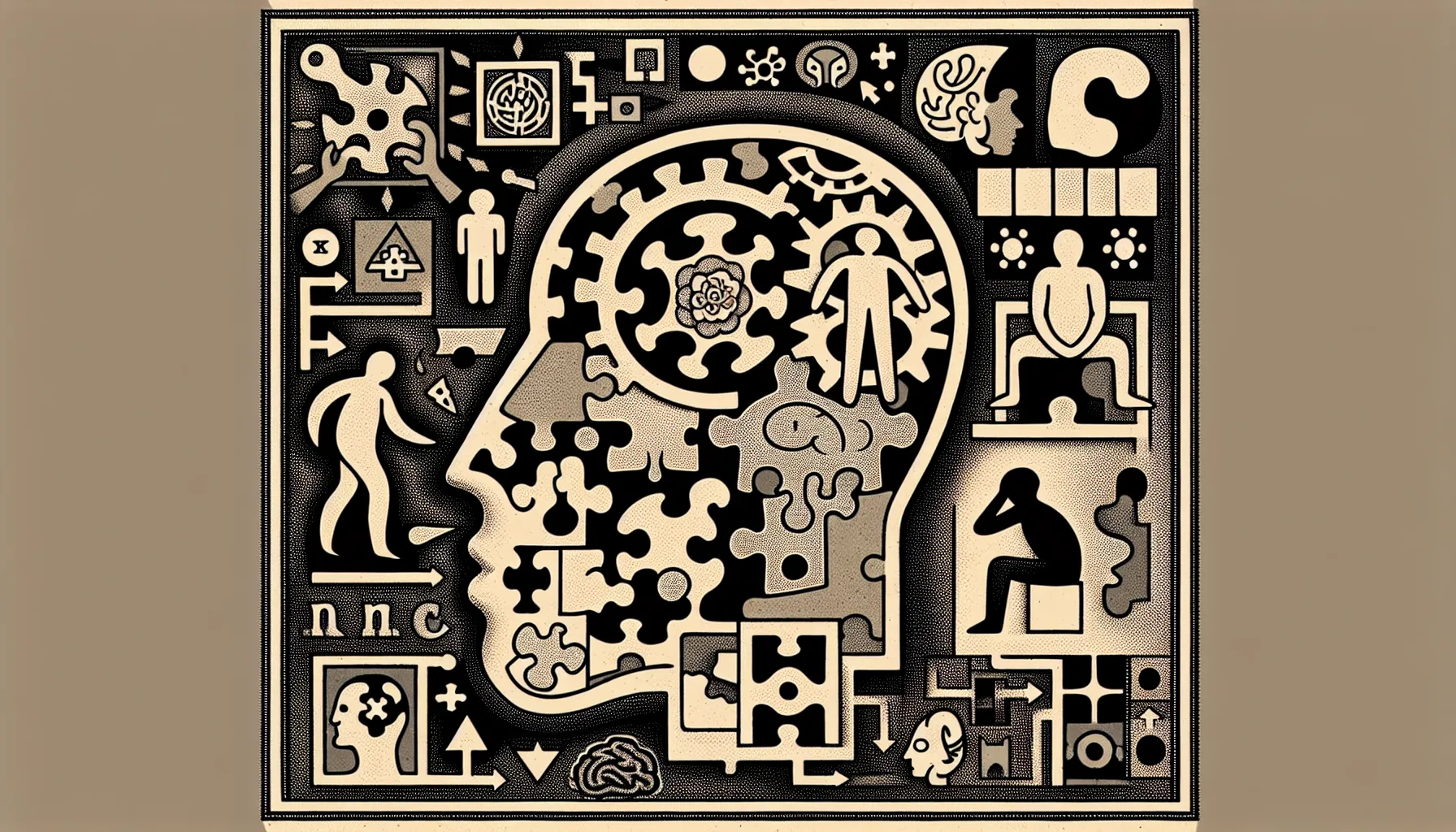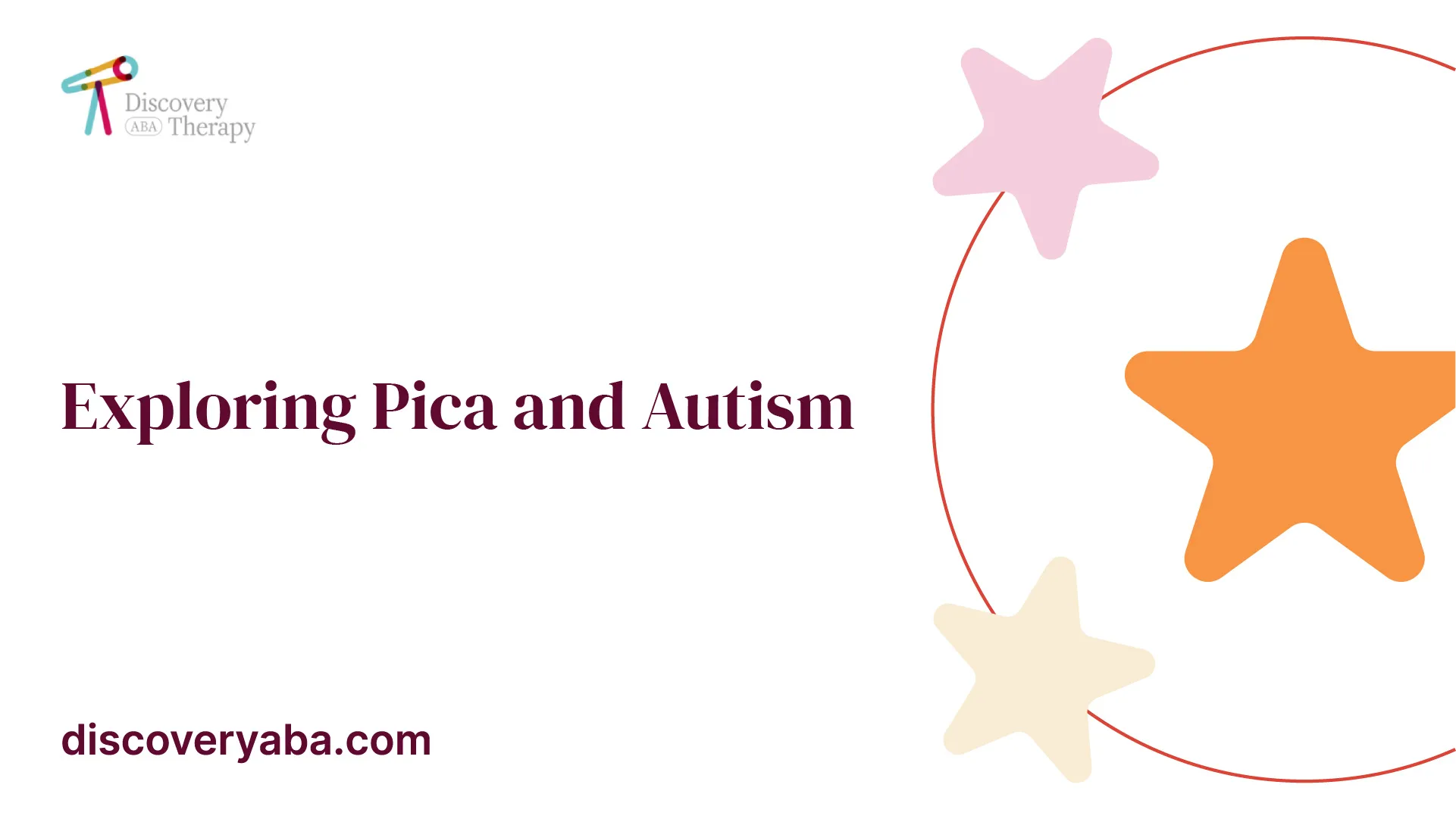Exploring Pica and Autism
Unraveling the connection between pica and autism. Explore the health implications and practical strategies for management.

Understanding Pica and Autism
Pica, a behavior characterized by the persistent consumption of non-food items, is relatively common in individuals with autism or other developmental disabilities. This behavior involves ingesting objects such as paper, soap, pebbles, thread, and bits of clothing. Understanding the definition of pica behavior and its prevalence in individuals with autism is crucial for addressing this issue effectively.
Definition of Pica Behavior
Pica behavior refers to the persistent consumption of non-food items. It is important to note that pica is not limited to individuals with autism but can also be observed in other developmental disabilities. The behavior may stem from challenges in distinguishing edible from non-edible items. It can also serve as a way to seek sensory input or alleviate pain and discomfort for individuals with autism.

Prevalence in Individuals with Autism
Recent studies have indicated that pica is significantly more prevalent among children with autism compared to the general population, although the exact prevalence remains unknown. According to the Autism Research Institute, approximately 23.2% of autistic children and up to 60% of autistic adults experience pica. These statistics highlight the importance of addressing and managing this behavior within the autism community.
Autistic children with pica also have a higher prevalence of gastrointestinal (GI) signs, symptoms, and diseases compared to those without pica. This suggests that autistic individuals with pica may represent a phenotypic subgroup characterized by GI symptoms and requiring specialized treatments [2].
Understanding the prevalence of pica in individuals with autism is essential for raising awareness and promoting interventions that can help mitigate the associated challenges. By addressing pica behavior effectively, we can improve the overall well-being and quality of life for individuals with autism.
Health Implications of Pica
Pica behavior in individuals with autism can have serious health implications. It is important to recognize and address these implications to ensure the well-being and safety of individuals with autism who engage in pica behaviors.
Dental and Nutritional Consequences
Pica behavior, the ingestion of non-food items, can have detrimental effects on dental health. The act of chewing or sucking on non-food objects can lead to dental problems such as tooth damage, enamel erosion, and gum irritation. Additionally, the ingestion of non-food items can interfere with nutrient absorption, potentially leading to nutritional deficiencies.
Gastrointestinal Complications
Ingesting non-food items can result in various gastrointestinal complications. This can include blockages or obstructions in the digestive system, leading to discomfort, pain, and potential medical emergencies. Gastrointestinal complications associated with pica behavior may include gastrointestinal parasites, lead toxicity, choking, poisoning, sepsis, and intestinal obstruction or perforation. In some cases, these complications have even resulted in fatalities.
To mitigate the health implications of pica behavior, it is crucial for healthcare providers and caregivers to monitor individuals with autism who engage in pica behaviors. Regular dental check-ups are essential to address any dental issues that may arise. Nutritional assessments should also be conducted to identify and address any potential nutrient deficiencies. Additionally, close observation and intervention can help prevent or address gastrointestinal complications before they escalate.
By understanding the dental and nutritional consequences, as well as the gastrointestinal complications associated with pica behavior in individuals with autism, healthcare providers and caregivers can take proactive measures to protect the health and well-being of those affected.
Managing Pica in Autism
When it comes to managing pica behavior in individuals with autism, a comprehensive approach is necessary. This involves implementing behavioral interventions and seeking guidance from healthcare providers. By addressing the underlying causes and providing appropriate support, individuals with autism can better navigate and manage their pica tendencies.
Behavioral Interventions
Behavioral interventions play a crucial role in managing pica behavior in individuals with autism. One effective technique is the "differential reinforcement of functional communication" (DRFC) method, which focuses on reinforcing appropriate communication skills and replacing pica behavior with more socially acceptable actions. This approach helps individuals with autism express their needs and desires without resorting to pica behavior.
Before implementing behavioral treatment, it is important to rule out any nutritional deficiencies as the underlying cause of pica. Consulting with a pediatrician is essential to ensure that any potential nutrient imbalances are addressed.
Behavioral treatment plans should be based on a functional analysis (FA) conducted by a trained behavioral expert, such as a Board Certified Behavior Analyst (BCBA). This analysis helps determine the reasons behind the pica behavior and guides the development of appropriate treatment strategies. These may include behavioral replacement techniques, environmental enrichment, and reinforcement of more suitable behaviors.
Role of Healthcare Providers
Healthcare providers, including pediatricians and behavior specialists, play a crucial role in managing pica behavior in individuals with autism. Pediatricians can assess the overall health and nutritional status of the individual, helping to rule out any underlying medical conditions that may contribute to pica behavior. They can also conduct tests to identify potential nutritional deficiencies and provide appropriate treatment recommendations [6].
Working with behavior specialists, such as clinical psychologists or Board Certified Behavior Analysts (BCBAs), can provide valuable insight and guidance in finding effective ways to reduce pica tendencies. These professionals can help develop individualized treatment plans, focusing on skill-building, redirection, and promoting alternative behaviors. By addressing the specific needs of individuals with autism, behavior specialists can support the management of pica behavior and promote positive behavioral changes.
By combining behavioral interventions with the expertise of healthcare providers, individuals with autism and pica behavior can receive the comprehensive support necessary to manage and overcome their challenges. It is important to approach pica management with a holistic perspective, considering the unique needs and circumstances of each individual, and working collaboratively with professionals to provide the best possible care.
Nutritional Interventions for Pica
When addressing pica behavior in individuals with autism, implementing targeted nutritional interventions can play a significant role in managing and reducing these behaviors. These interventions focus on addressing nutrient deficiencies and metabolic imbalances that may contribute to pica. Two common nutritional interventions for pica in autism are iron and zinc supplements, as well as specialized formulations and therapies.
Iron and Zinc Supplements
Iron and zinc are essential minerals that play crucial roles in various bodily functions. Deficiencies in these minerals have been associated with pica behaviors in individuals with autism. Supplementing with iron and zinc can help correct these deficiencies and potentially reduce pica behaviors.
Iron supplements aid in preventing iron-deficiency anemia, a condition that can lead to pica. Anemia is characterized by low levels of red blood cells and can cause individuals to crave non-food items. Consultation with a healthcare provider, such as a pediatrician, is recommended to determine the appropriate dosage and duration of iron supplementation for individuals with pica.
Zinc supplements are also commonly used in the management of pica. Zinc plays a vital role in immune function, growth, and development. Correcting zinc deficiencies may help reduce the occurrence of pica behaviors. As with iron supplements, it is important to consult with a healthcare provider to determine the appropriate dosage and duration of zinc supplementation.
Specialized Formulations and Therapies
Specialized formulations and therapies can also be utilized as nutritional interventions for pica in individuals with autism. These interventions aim to address metabolic imbalances and promote overall nutritional well-being.
One such specialized formulation is Vivinex, which is designed specifically for individuals with autism and related conditions. Vivinex is a nutritionally complete, peptide-based formula that provides essential nutrients in an easily digestible form. This specialized formulation can help meet nutritional requirements and reduce the likelihood of pica behaviors.
In addition to specialized formulations, targeted nutritional therapies have shown promise in correcting metabolic imbalances in autistic children. These therapies may include folinic acid, betaine, and methyl B12. They are designed to address specific metabolic abnormalities that may contribute to pica behaviors.
It is important to note that nutritional interventions should be implemented under the guidance of healthcare professionals, such as pediatricians and specialized autism practitioners. They can assess individual needs, conduct necessary tests to identify any nutritional deficiencies, and provide appropriate recommendations for nutritional interventions to address pica behaviors in individuals with autism.
By incorporating iron and zinc supplements, as well as specialized formulations and therapies, into a comprehensive treatment plan, individuals with autism and pica behaviors may experience improvements in nutritional status and a reduction in pica-related cravings. However, it is essential to consult with healthcare providers who specialize in autism to ensure proper evaluation, monitoring, and guidance throughout the process.
Practical Strategies for Parents
When it comes to managing pica in individuals with autism, there are practical strategies that parents can implement to help keep their child safe and minimize the risk of ingestion of non-food items. Two key strategies include pica-proofing the environment and educating caregivers and teachers.
Pica-Proofing the Environment
Pica-proofing the environment involves taking proactive measures to remove or secure non-food items that may be tempting for individuals with pica. By creating a safe and controlled environment, parents can reduce the likelihood of accidental ingestion. Some practical steps to pica-proof the environment include:
- Storing non-food items out of reach: It is important to keep objects that may be ingested, such as coins, buttons, or small toys, out of reach. Store them in locked cabinets or drawers to prevent access.
- Regularly inspecting the environment: Conduct regular checks of the living area, play areas, and other spaces where the individual spends time. Look for any potential hazards or non-food items that may have been inadvertently left within reach.
- Encouraging structured play: Engage the individual in structured play activities that keep their hands and minds occupied. Providing age-appropriate toys, puzzles, and other activities can help redirect their focus away from non-food items.
Educating Caregivers and Teachers
Educating caregivers and teachers about the child's condition and pica tendencies is essential for maintaining a safe environment and ensuring consistent support. Some important aspects to consider when educating caregivers and teachers include:
- Providing information about pica: Explain what pica is and its potential risks, especially as it relates to individuals with autism. Help them understand the importance of monitoring the individual and being proactive in preventing the ingestion of non-food items.
- Communicating prevention strategies: Share the pica-proofing strategies implemented at home and encourage caregivers and teachers to follow similar practices. Emphasize the significance of keeping non-food items out of the individual's reach and promptly removing any potential hazards.
- Collaboration and open communication: Foster a collaborative relationship with caregivers and teachers by maintaining open lines of communication. Regularly exchange information about any new developments, incidents, or concerns related to pica. This collaboration can help ensure consistent support and intervention.
By pica-proofing the environment and educating caregivers and teachers, parents can create a safer environment for individuals with autism and reduce the risk of ingestion of non-food items. It is crucial to remain vigilant and work together with the support system to address pica tendencies effectively.
Addressing Sensory Factors
When examining the connection between pica and autism, it is important to consider the role of sensory factors. Sensory processing difficulties commonly reported in individuals with autism spectrum disorder (ASD) may contribute to atypical eating behaviors, including pica. These atypical eating behaviors often encompass limited food preferences and hypersensitivity to food textures.
Impact on Atypical Eating Behaviors
The sensory processing difficulties experienced by individuals with ASD can have a profound impact on their eating behaviors. Hypersensitivity to textures and tastes may lead to the avoidance of certain foods or a limited range of food preferences. Additionally, the sensory challenges faced by individuals with autism can heighten their desire for oral stimulation, leading to the consumption of non-food items as part of pica behavior.
It is crucial to recognize that pica may be a component of a larger pattern of atypical eating behaviors in individuals with autism. By understanding the sensory factors involved, caregivers and healthcare providers can develop targeted strategies to address these challenges.
Preventive Measures
Prevention is key when addressing pica behavior related to sensory factors in individuals with autism. Here are some preventive measures that can be implemented:
- Close monitoring: Keeping a close eye on individuals with autism can help prevent them from engaging in pica behavior. Supervision can help ensure their safety and allow for timely intervention if they attempt to consume non-food items.
- Environmental modifications: Pica-proofing the environment by removing or securing non-food items can help minimize the risk of ingestion. Using childproof locks on cabinets and drawers can restrict access to potentially harmful substances.
- Diversion and engagement: Engaging individuals with autism in activities that capture their attention and provide appropriate sensory stimulation can help redirect their focus away from pica behavior. Finding alternative outlets for oral stimulation, such as chewable toys or gum (under supervision), can also be beneficial.
- Communication with caregivers: Informing other caregivers, such as teachers or family members, about concerns regarding pica behavior can help ensure consistency in managing and preventing such incidents. Educating caregivers about the potential risk factors and strategies for prevention can contribute to a safe and supportive environment for individuals with autism.
By addressing sensory factors and implementing preventive measures, caregivers and healthcare providers can work together to reduce atypical eating behaviors, including pica, in individuals with autism. This multidimensional approach considers the unique sensory needs of individuals with autism, promoting their overall well-being and reducing the potential health risks associated with pica behavior.
References
- [1]: https://www.ambitionsaba.com/resources/pica-and-autism
- [2]: https://autism.org/autism-pica/
- [3]: https://www.crossrivertherapy.com/autism/pica-and-autism
- [4]: https://www.ncbi.nlm.nih.gov/pmc/articles/PMC9188765/
- [5]: https://www.seattlechildrens.org/clinics/autism-center/the-autism-blog/suggestions-for-pica-treatment/
- [6]: https://www.autismspeaks.org/expert-opinion/pica-autism
Does Your Child Have An Autism Diagnosis?
Learn More About How ABA Therapy Can Help
Find More Articles
Contact us
North Carolina, Nevada, Utah, Virginia
New Hampshire, Maine
Arizona, Colorado, Georgia, New Mexico, Oklahoma, Texas
.avif)




































































































